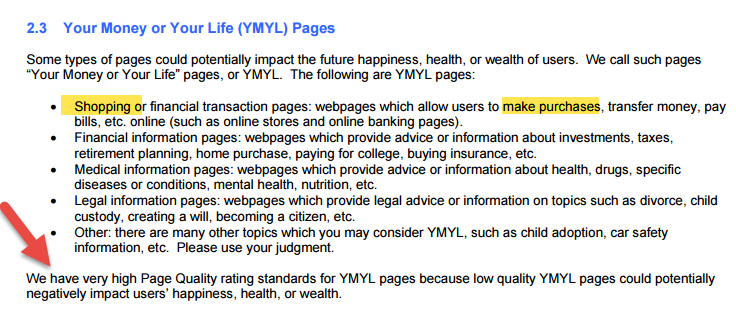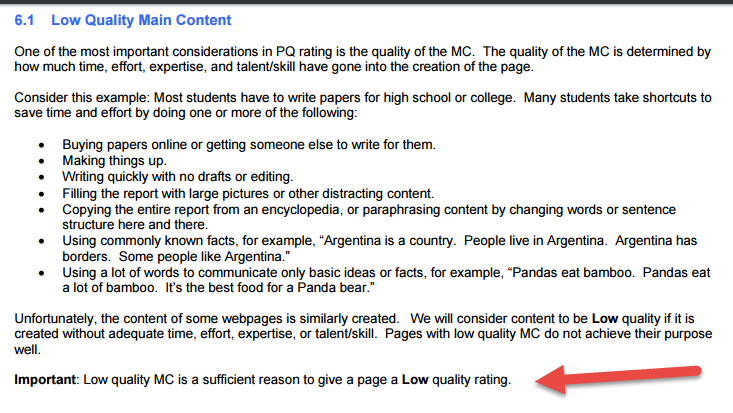Backlinks. Coding. Navigation structure. Images. Listen in on any conversation about SEO (whether for Google or Amazon) and you’ll likely hear mention of all these elements and more. Regardless of which analogy you choose (a recipe with many ingredients, a puzzle with many pieces…), SEO on any level is a complex creature. There is one aspect, however, that outweighs the others.
It probably won’t surprise you that the #1 factor (in my opinion and others’) is content.
Words have always been the core of SEO for two primary reasons. First, the entire basis of SEO is keywords. ‘Nuff said. Second, if you remove all the verbiage (keywords and other written words in content, anchor text, links, ratings, reviews, etc.), you have no way to tell a search engine what the topic of a page / site / blog post is, leaving it ignorant about how to send people to the page and what searchers would find if they did ever locate it online.
Words play the roles of:
• Identifier
• Navigator
• Communicator
• Informer
• Converter
• And more.
Google Highlights Content Quality Throughout Quality Guidelines
Not just any words. Google recently released a more-in-depth Search Quality Guidelines document (originally put out in 2013) this past November. Many of these 160 pages deal with content in one form or another. Google is concerned about quality.
In this document, Google states:

Here is an example and why Google found this to have high-quality content.

For ecommerce site owners, Google adds the designation of Your Money or Your Life (YMYL) pages.

The Search Guidelines document doesn’t only talk about high-quality content. It also outlines what Google reviewers should watch for when evaluating low-quality content.
Types of content that may get you a low-quality rating include:
• No main content (MC)
• Keyword-stuffed content
• Gibberish content
• Automatically generated content
• Copied content.

In its overview to Page Quality Reviewers, Google highlights the three most important considerations for a high-quality page. Two of the top three deal with content (words).

Amazon Actively Attempts to Control Content Quality
Google isn’t alone in its pursuit of excellent content. Amazon, too, has its eye on what content is provided, how much and where. With detailed Style Guides (aka, inventory templates) outlining what is and isn’t allowed on product detail pages, and an ever-growing team of Seller Support reps who call out sellers about their violations, this ecomm giant focuses significantly on content.
From proper keyword use (Amazon refers to them as “search terms”) to developing effective titles, bullets and descriptions, this “closed” marketplace is especially keen on pressing sellers to have exceptional content.
Some of the strictest policies that Amazon adheres to (sometimes 🙂 ) deal with product names (titles). While they are, admittedly, ill-equipped to stay on top of all violations, Amazon does send out the dreaded “Your product has been delisted” email on a regular basis. This is Amazon’s equivalent of a low-quality rating. Instead of suppressing your web page / site in the search results as Google does, Amazon simply pulls it out of existence until you bring the copy into compliance!
Unlike with Google, where you do have outside forces at play in the good-rankings equation (i.e., backlinks, etc.), 99% of what’s involved with ranking high on Amazon takes place within the confines of the marketplace. That means your search terms and copy have to be spot-on or you will immediately feel the pinch.
Here’s the “don’t” list dealing with titles for one category:

Obviously, Amazon is significantly more particular about content specifics than Google!
Always Remember…
Regardless of which platform you’re trying to rank on:
Content Quality Matters — If you have poorly written copy, not only will the search engine count it as a low-quality indicator, but human customers and searchers will most likely question your credibility.
Content Has Multiple Functions / Audiences — Many times, website owners and sellers have tunnel vision. They focus on making content SEO-friendly and ignore all the other functions of text. When developing your copy, remember that it should help:
• Readers identify that your product is what they are looking for,
• Communicate the features, benefits, and unique competitive advantages (UCAs),
• Inform shoppers so they can compare and evaluate,
• Convert lookers into buyers with details that allow them to make a confident buying decision.
Want more specifics on how to create SEO-friendly, conversion-oriented copy for websites or Amazon product pages? Check out these best-sellers:
Amazon Advantage: Product Listing Strategies That Boost Your Sales
Use code amzadvblog to save $10.
Step-by-Step Copywriting Course (for creating website copy) — Was $299. Save 33% (use code copy33).





Great content, Karon! Thanks for continually helping us Amazon sellers and content writers to be better at what we do!
Thank you for your kind words. Please share on your favorite social sites 😉